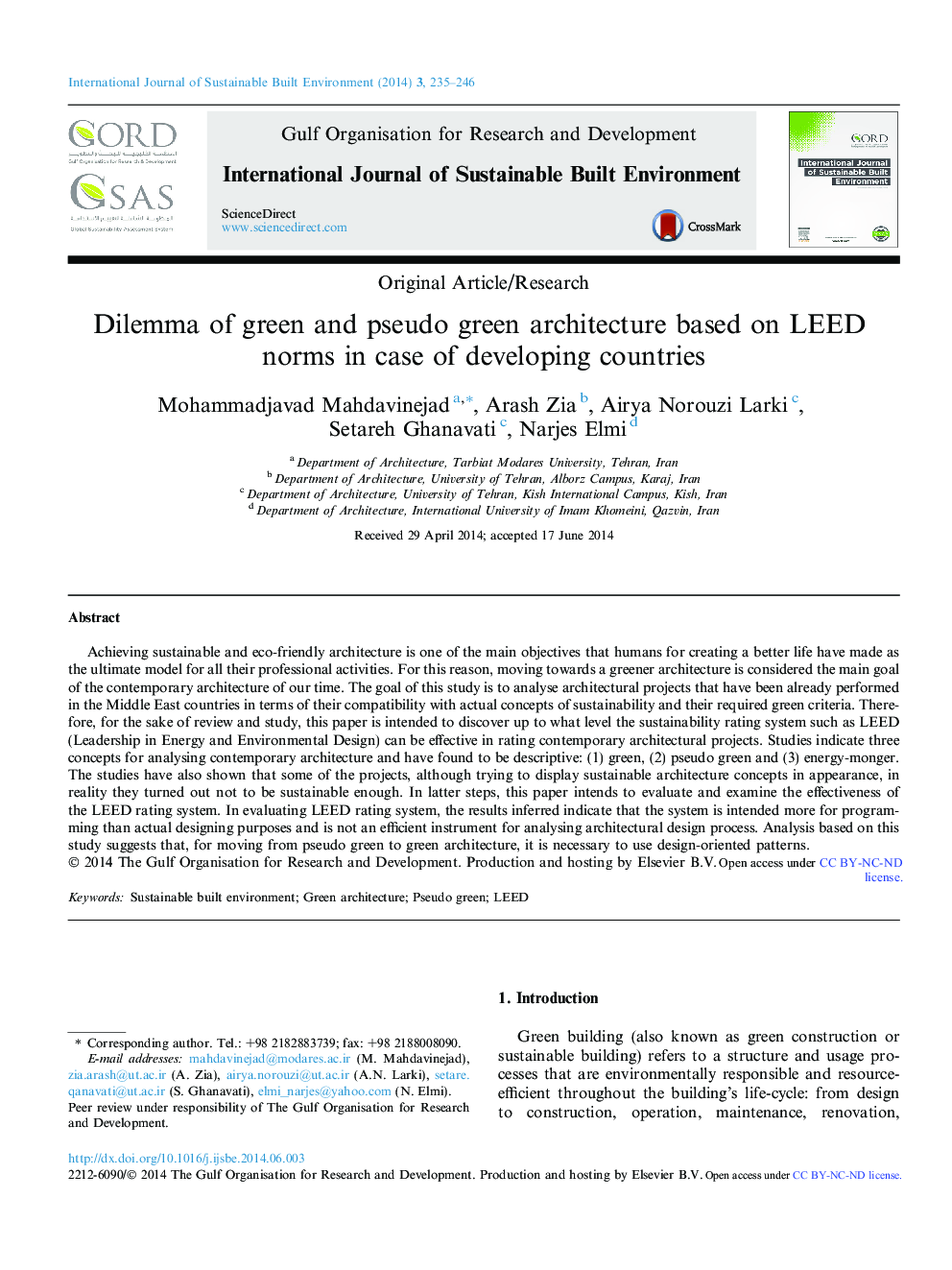| Article ID | Journal | Published Year | Pages | File Type |
|---|---|---|---|---|
| 214761 | International Journal of Sustainable Built Environment | 2014 | 12 Pages |
Abstract
Achieving sustainable and eco-friendly architecture is one of the main objectives that humans for creating a better life have made as the ultimate model for all their professional activities. For this reason, moving towards a greener architecture is considered the main goal of the contemporary architecture of our time. The goal of this study is to analyse architectural projects that have been already performed in the Middle East countries in terms of their compatibility with actual concepts of sustainability and their required green criteria. Therefore, for the sake of review and study, this paper is intended to discover up to what level the sustainability rating system such as LEED (Leadership in Energy and Environmental Design) can be effective in rating contemporary architectural projects. Studies indicate three concepts for analysing contemporary architecture and have found to be descriptive: (1) green, (2) pseudo green and (3) energy-monger. The studies have also shown that some of the projects, although trying to display sustainable architecture concepts in appearance, in reality they turned out not to be sustainable enough. In latter steps, this paper intends to evaluate and examine the effectiveness of the LEED rating system. In evaluating LEED rating system, the results inferred indicate that the system is intended more for programming than actual designing purposes and is not an efficient instrument for analysing architectural design process. Analysis based on this study suggests that, for moving from pseudo green to green architecture, it is necessary to use design-oriented patterns.
Keywords
Related Topics
Physical Sciences and Engineering
Chemical Engineering
Chemical Engineering (General)
Authors
Mohammadjavad Mahdavinejad, Arash Zia, Airya Norouzi Larki, Setareh Ghanavati, Narjes Elmi,
